Ama is a slave. She is old and dying and has an incredible story to tell. It is about violence and heartaches, but it is also a story of courage, hope, determination and ultimately, love. Since Ama is blind, she cannot write down her story for future generations. Instead, she summons the son from whom she has been long separated. at first he thinks she’s old and tiresome. But as Ama’s astonishing journey unfolds in her own words, his world changes forever, until he can never see it with the same eyes again. Nor will those who read Ama’s story.
Writing
The Wild Book
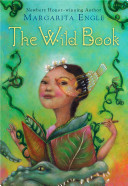
Fefa struggles with words. She has word blindness, or dyslexia, and the doctor says she will never read or write. Every time she tries, the letters jumble and spill off the page, leaping and hopping away like bullfrogs. How will she ever understand them? But her mother has an idea. She gives Fefa a blank book filled with clean white pages. “Think of it as a garden,” she says. Soon Fefa starts to sprinkle words across the pages of her wild book. She lets her words sprout like seedlings, shaky at first, then growing stronger and surer with each new day. And when her family is threatened, it is what Fefa has learned from her wild book that saves them.
See the review at WOW Review, Volume 4, Issue 3
Cruisers
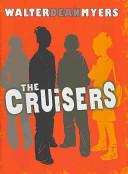
Zander and his friends, Kambui, LaShonda, and Bobbi start their own newspaper, The Cruiser, as a means for speaking out, keeping the peace, and expressing what they believe. When the school launches a mock Civil War, Zander and his friends are forced to consider the true meaning of democracy and what it costs to stand up for a cause. The result is nothing they could have expected, and everything they could have hoped for. Zander Scott and his friends, Kambui, LaShonda, and Bobbi are in trouble. Even though they’re students at DaVinci, one of the best Gifted and Talented schools in Harlem, their grades are slipping, and Mr. Culpepper, the Assistant Principal and Chief Executioner, is ready to be rid of them. When the school starts a unit on the Civil War, and kids split up into Union and Confederate sympathizers, Zander and his crew are given a charge to negotiate a peace between both sides before the war actually breaks out. That’s when Zander comes up with the idea to launch an alternative school newspaper called The Cruiser. What he and his friends learn is that their writing has power to keep the peace, but that words can be weapons, too. Soon everyone at DaVinci is forced to consider the true meaning of democracy and what it costs to stand up for a cause.
See the review at WOW Review, Volume 3, Issue 4
Scribbling Women
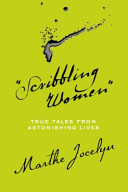
In 1855, Nathaniel Hawthorne wrote to his publisher, complaining about the irritating fad of “scribbling women.” Whether they were written by professionals, by women who simply wanted to connect with others, or by those who wanted to leave a record of their lives, those “scribbles” are fascinating, informative, and instructive. Margaret Catchpole was a transported prisoner whose eleven letters provide the earliest record of white settlement in Australia. Writing hundreds of years later, Aboriginal writer Doris Pilkey wrote a novel about another kind of exile in Australia. Young Isabella Beeton, one of twenty-one children and herself the mother of four, managed to write a groundbreaking cookbook before she died at the age of twenty-eight. World traveler and journalist Nelly Bly used her writing to expose terrible injustices. Sei Shonagan left poetry and journal entries that provide a vivid look at the pampered life and intrigues in Japan’s imperial court. Ada Blackjack, sole survivor of a disastrous scientific expedition in the Arctic, fought isolation and fear with her precious Eversharp pencil. Dr. Dang Thuy Tram’s diary, written in a field hospital in the steaming North Vietnamese jungle while American bombs fell, is a heartbreaking record of fear and hope. Many of the women in “Scribbling Women” had eventful lives. They became friends with cannibals, delivered babies, stole horses, and sailed on whaling ships. Others lived quietly, close to home. But each of them illuminated the world through her words.
The King’s Secret: The Legend of King Sejong
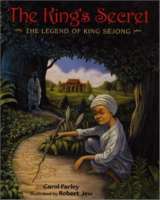
Chosun Dynasty had a wise King Sejong. When a humble servant boy tells of his longing to read and write, King Sejong sets out to create a simple yet beautiful way to write the Korean language. The people reject the new way of writing–until the boy gives the king another grand idea.
The Pet Dragon: A Story about Adventure, Friendship, and Chinese Characters

When Lin’s beloved pet dragon disappears, she searches for him far and wide until a witch helps her to reach the dragon’s new home. This book introduces a different Chinese character on each step of Lin’s adventure.
I Love Words
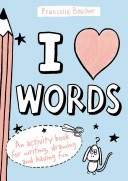
This amazing book will have you playing with words and inventing new ones. You’ll turn youself into a spelling super hero, build your own bookstore and even make a talking cake.
Liu and the Bird: A Journey in Chinese Calligraphy
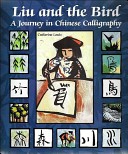
This innovative book combines the story of Liu, who goes off to visit her grandfather, with a rebus-style look at the evolution of the Chinese written language from pictures to modern calligraphy characters.
A Fire In My Hands: Revised And Expanded Edition
Acclaimed by educators and unavailable since 1998, A Fire in My Hands has been revised and expanded in this new edition. Old and new fans of Soto’s work will welcome the return of his compelling poems.
Includes an introduction and an interview with the author.
The Savage
Mysterious and utterly mesmerizing, this graphic-novel-within-a-novel pairs the extraordinary prose of David Almond with the visual genius of Dave McKean. Blue Baker is writing a story — not all that stuff about wizards and fairies and happily ever after — a real story, about blood and guts and adventures, because that’s what life’s really like. At least it is for Blue, since his dad died and Hopper, the town bully, started knocking him and the other kids around. But Blue’s story has a life of its own — weird and wild and magic and dark — and when the savage pays a nighttime visit to Hopper, Blue starts to wonder where he ends and his creation begins.

